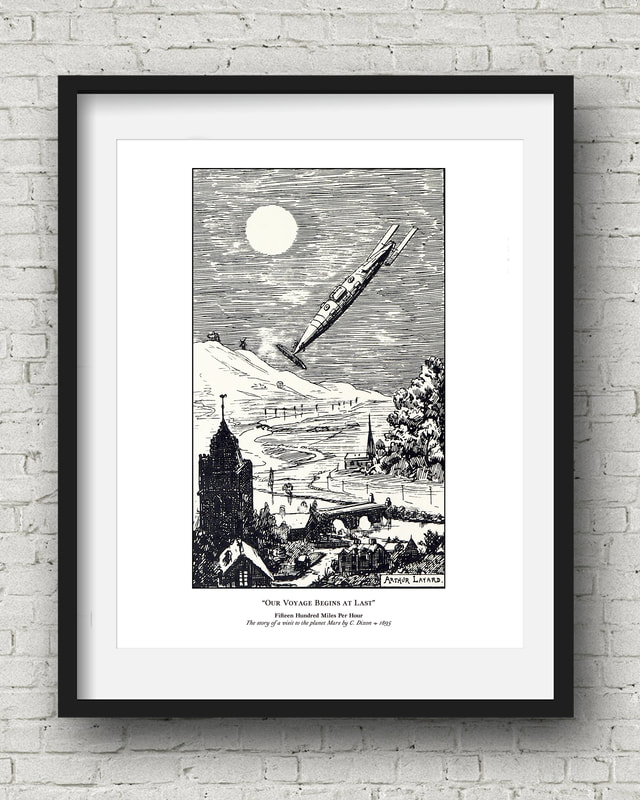Watch the video to get a closer look at the fine detail in this illuminating illustration
Our Voyage Begins at Last
Fifteen Hundred Miles Per Hour by C. Dixon, 1895
Printed on luxurious, thick, fine art paper. This print will show great in any room of the house. Frame is not included. Makes a wonderful gift too (housewarming, birthday, etc.,). Printed in Santa Monica, California. Paper made in the USA.
About
Charles Edward Dixon was a world famous naturalist, particularly well known for his work in ornithology. He was born in Camden Town, Middlesex [now London] in 1858, the son of landscape artist Charles Thomas Dixon and Louisa (nee Edwards) Dixon, but moved to Sheffield at a young age. He became a pupil teacher at age 12, but was not interested in teaching the required curriculum, but preferred to focus on natural history - particularly ornithology. At the time, biology was considered to be a distraction rather than a serious subject to study.
Dixon was often to be found perched on the branches of trees or entangled in bushes, with his nose in a book. This propensity for studying in precarious positions continued throughout his life. The prefix of one of his books, "Our Rarer Birds" states that it was written from the nest of an eagle on the Isle of Skye.
Dixon's love of ornithology led him to work with another celebrated ornithologist, Henry Seebohm. Dixon travelled the country with the older man, leading to their discovery of the St Kilda Wren in 1884. The two had co-authored "A History of British Birds" in 1883.
Dixon also worked with Alfred Russell Wallace, who in turn had previously worked on and co-authored the theory of evolution by natural selection with Charles Darwin. Wallace and Dixon were both interested in the migration patterns of birds and co-authored several papers on the subject.
Dixon donated over 100 skins of birds to Sheffield Museums during the latter part of the 19th century.
Charles Edward Dixon died in 1926.
Dixon was often to be found perched on the branches of trees or entangled in bushes, with his nose in a book. This propensity for studying in precarious positions continued throughout his life. The prefix of one of his books, "Our Rarer Birds" states that it was written from the nest of an eagle on the Isle of Skye.
Dixon's love of ornithology led him to work with another celebrated ornithologist, Henry Seebohm. Dixon travelled the country with the older man, leading to their discovery of the St Kilda Wren in 1884. The two had co-authored "A History of British Birds" in 1883.
Dixon also worked with Alfred Russell Wallace, who in turn had previously worked on and co-authored the theory of evolution by natural selection with Charles Darwin. Wallace and Dixon were both interested in the migration patterns of birds and co-authored several papers on the subject.
Dixon donated over 100 skins of birds to Sheffield Museums during the latter part of the 19th century.
Charles Edward Dixon died in 1926.
Part of the Steampunk Collection













